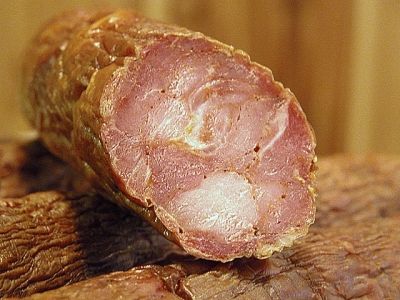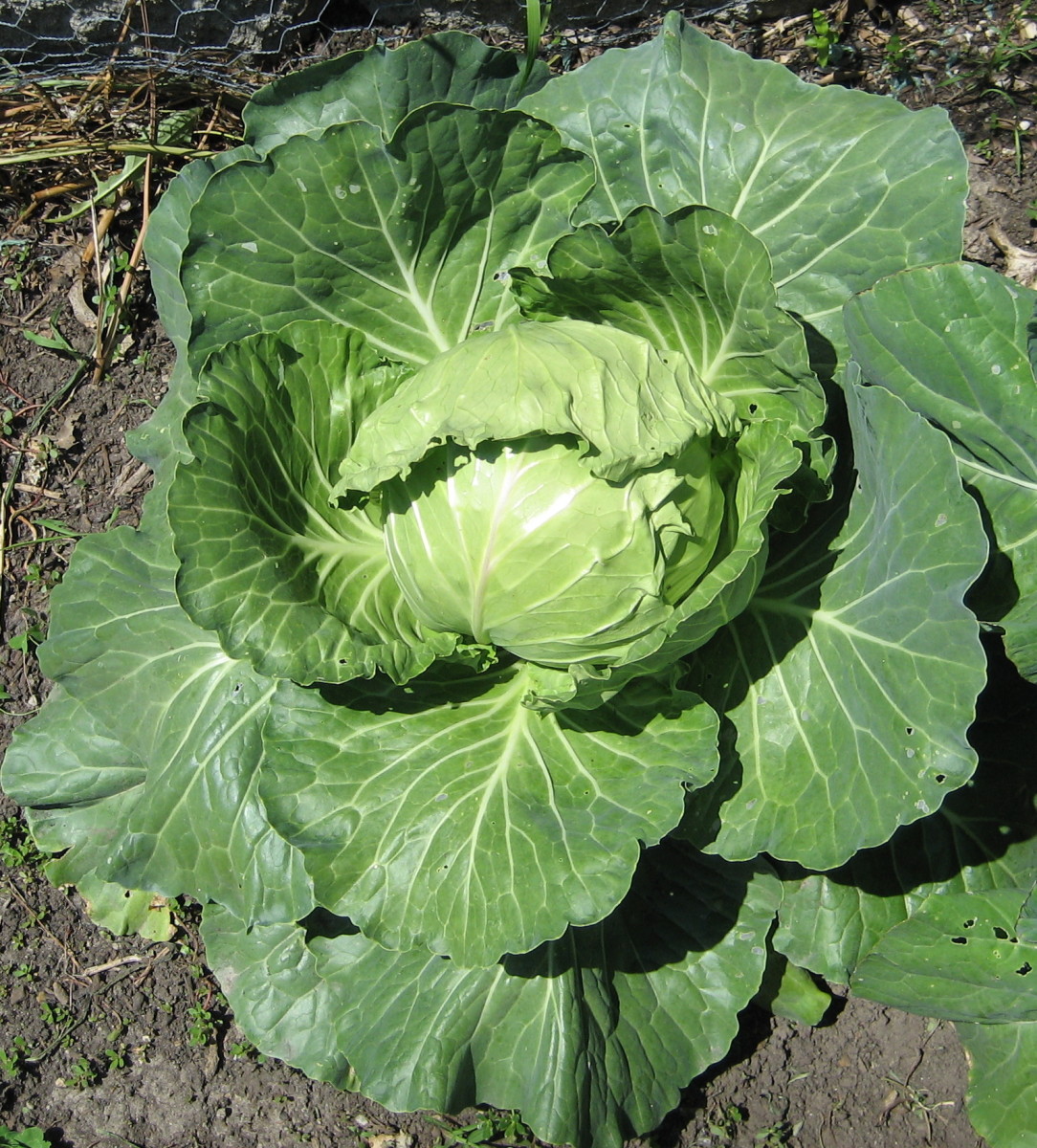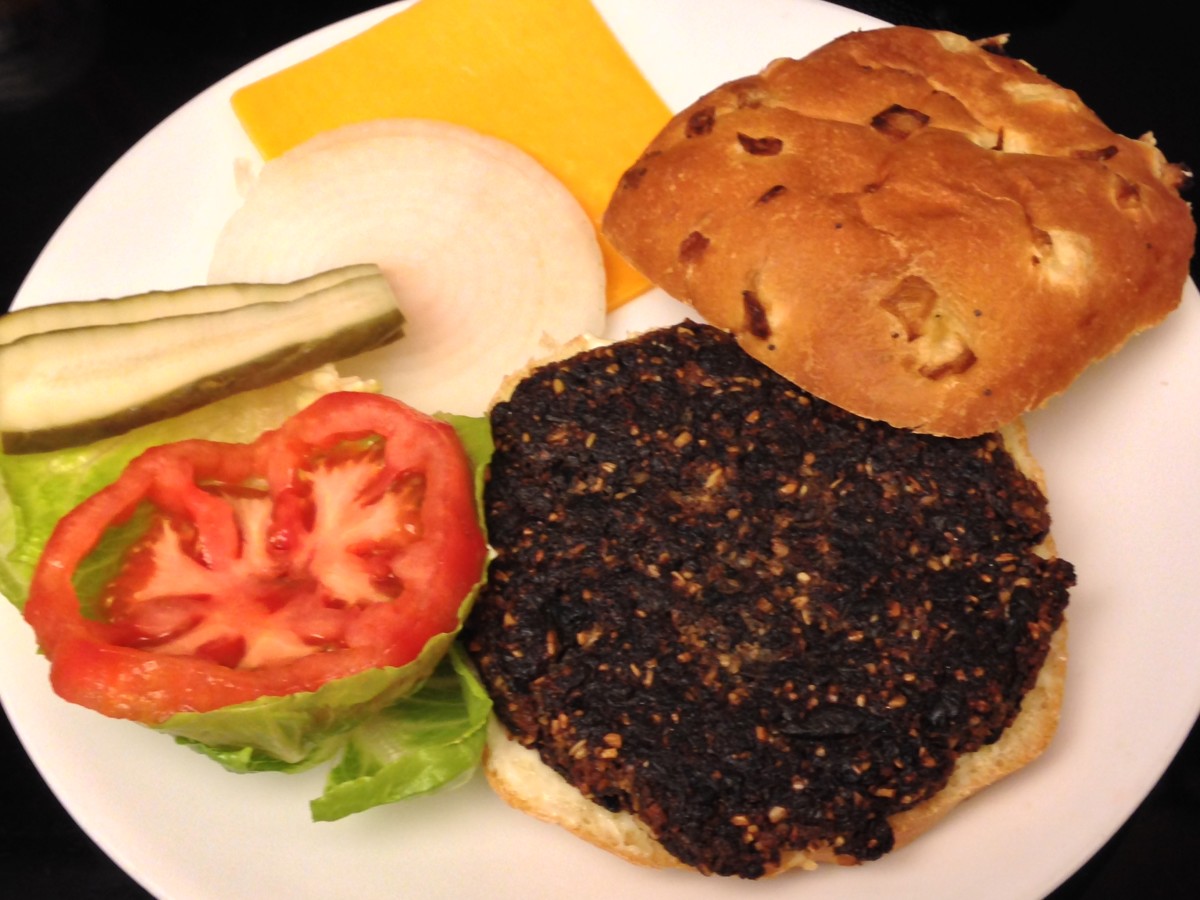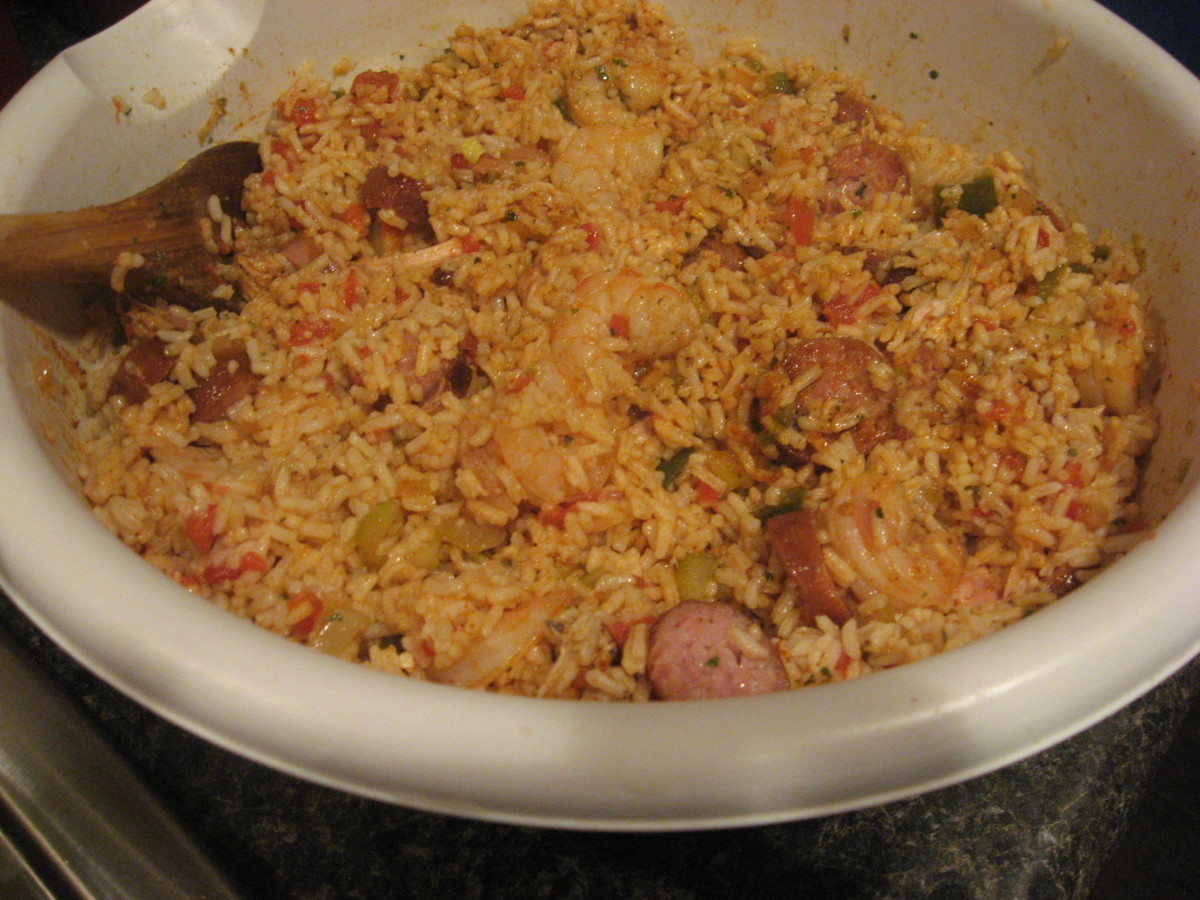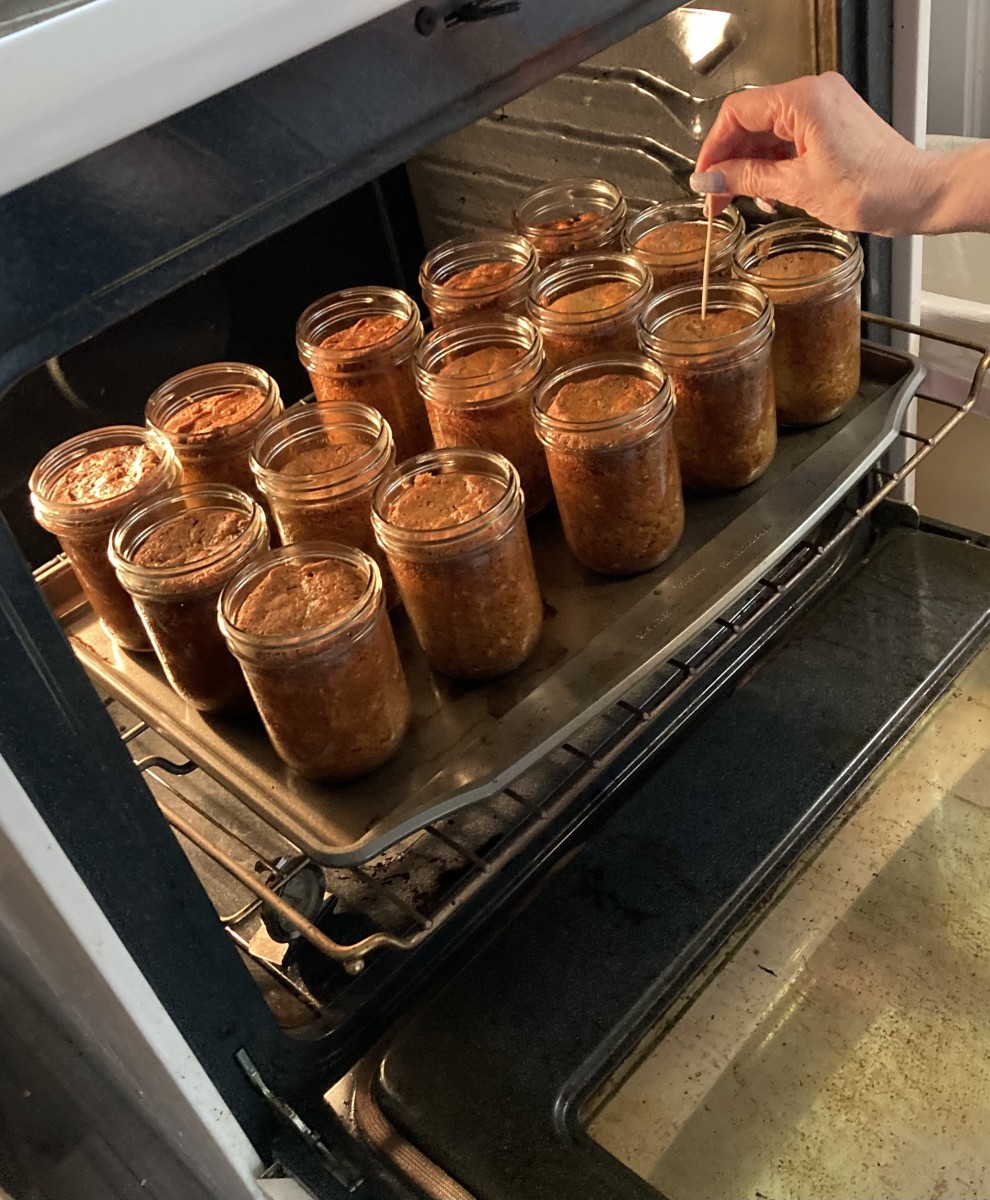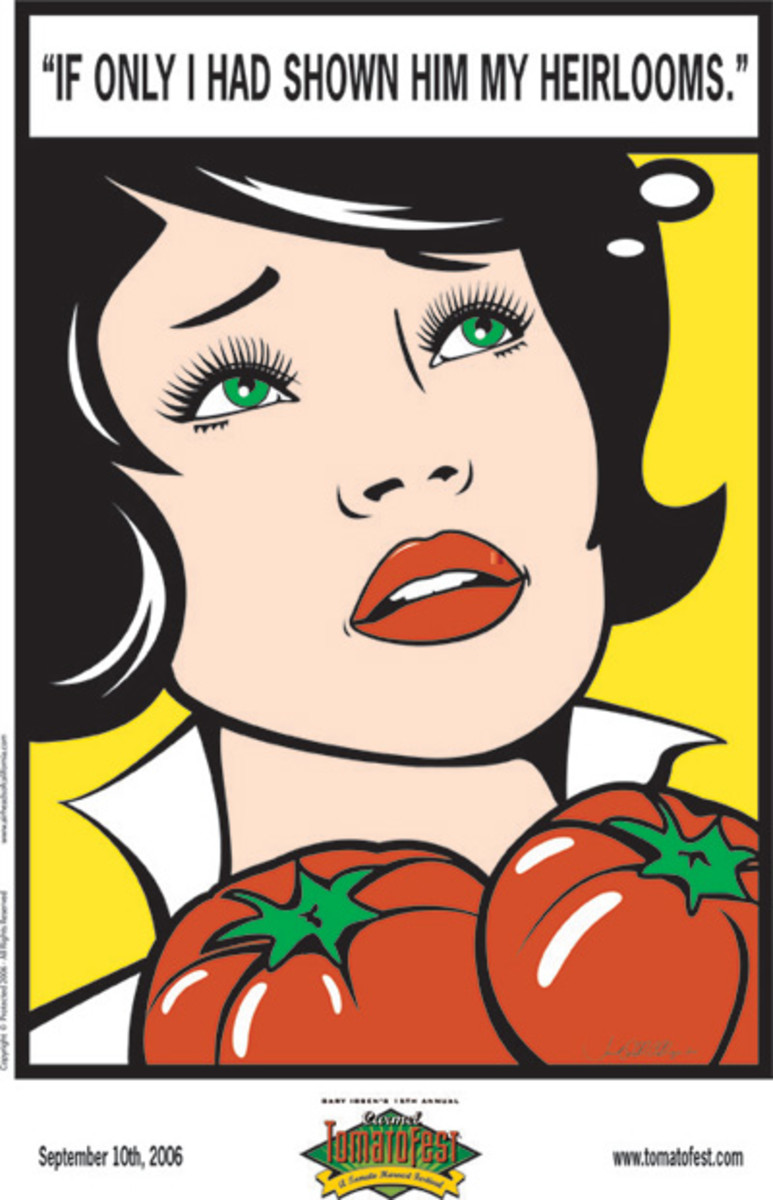Cajun and Creole Recipes
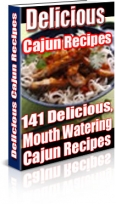
Let's Eat!
I am a Creole, born in the Deep South...New Orleans to be exact. My mother was a country girl, and my grandmother lived along the bayou in Mississippi. All the women in my family were excellent cooks, and I had the good fortune of being taught the art of Cajun and creole cooking. To this day, people come to my house hoping to get a taste of some authentic Cajun or Creole food, and lucky for them, I can deliver.
On this lens, I am going to share with you some of the secret recipes that were handed down to me from my grandmother and mother. This will be a lens in progress, as I will be adding to it as I get the time and locate some more great family recipes. In the meantime, get ready for some good eatin' y'all!
Bourbon Street in New Orleans


Crawdaddies, Mudbugs, and Crayfish
Crawdaddies, mudbugs, and crayfish are all different ways of saying crawfish in New Orleans. Crawdads are freshwater crustaceans resembling small lobsters, to which they are closely related. They breathe through gills and are found in bodies of water that do not freeze to the bottom; they are also mostly found in brooks and streams where there is fresh water running, and which have shelter against predators. In Louisiana, you can find them in abundance in the swamps.
Louisiana crawfish are usually boiled live in a large pot with heavy seasoning (salt, cayenne pepper, lemon, garlic, bay leaves, etc.) and other items such as potatoes, corn, onions, garlic, and sausage. They are generally served at a gathering known as a crawfish boil. Typcially, huge pots of crawfish are dumped out on a table where everyone starts helping themselves pinching da tails, suckin' da heads, and drinkin' da beer. It's one good time y'all!
Other popular dishes in the Cajun and Creole cuisines of Louisiana include crawfish touffe, crawfish pie, crawfish dressing, crawfish bread.
Mud Bugs
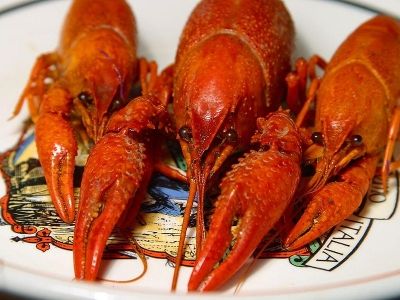
Crawfish Pie
INGREDIENTS
Salt and red pepper to taste
1 clove garlic, mashed
Pinch thyme
1/3 cup tomato sauce mixed with 1/3 cup water
Pinch nutmeg
1 tablespoon green onion
4 tablespoons cornstarch
1 tablespoons parsley
Pie dough enough for 4 individual pies (or 2 large)
1 - 1/2 cups crawfish tails
crawfish fat and water to make 2 cups
3 tablespoons cooking oil
1 medium onion, chopped fine
2 tablespoons butter
1/4 cup chopped celery
Directions:
Cook onion, celery, and garlic in cooking oil, stirring until tender. Dish out half the cooked
mixture.To the mixture, add tomato sauce, water, and crawfish fat, cook over medium heat and
when it boils, slowly add cornstarch and water stirring until sauce thickens, season with
nutmeg, thyme, red pepper and salt to taste; set aside.
To the remaining cooked onion mixture in a saucepan add crawfish tails, butter, cook 2 to 3 minutes. Combine sauce, crawfish, green onion and parsley. Cook, then pour into 4 pastry lined pie plates, equally divided. Wet edges of under crust, cover with uppercrust. Press edges together; prick with a fork. Bake in a 450 degree preheated oven 5 minutes; reduce heat to 400 degrees and bake about 15 minutes longer.
A Bit of Looziana Folklore
A common myth is that a crawfish with a straight tail died before it was boiled.
How to Eat Crawfish
Eating crawfish is an art. Here is a video that shows you how to get to the tasty meat by pinchin' da tails, and suckin' da heads.

RED BEANS and RICE
Serve on Mondays
A staple creole dish in New Orleans is red beans and rice. Served every Monday with a nice chunk of French bread and real butter, and you've got yourself a great meal. It is an old custom from the time when ham was a Sunday meal and Monday was washday. Red Beans and Rice is one of the handful of dishes in New Orleans cuisine to be commonly cooked both in people's homes and in restaurants. Many neighborhood restaurants continue to offer it as a Monday lunch special, usually with a side order of either smoked sausage or a pork chop. And while Monday washdays are largely a thing of the past, Red Beans remains a staple for large gatherings such as Super Bowl and Mardi Gras parties.
Here's a recipe for red beans and rice:
INGREDIENTS
1 pound dried red beans or kidney beans
1 large ham hock from left over ham, or smoked sausage
1/2 stick of real butter
1 large onion, finely chopped
1-2 sticks of celery, finely chopped
1 or 2 cloves garlic, finely minced
1 teaspoon salt
1/4 teaspoon red (cayenne) pepper
1 medium bay leaf
1/2 teaspoon black pepper
Directions:
Pick and wash red beans. It's a good idea to let them soak overnight and then rinse a few times to reduce the inevitable flatulence that is an unfortunate side effect of this dish.
In a large pot boil 1-1/2 quarts water, drop in the beans, bring to a boil.
Chop onion and add to beans> Add butter, garlic, ham hock, bay leaf, salt, and pepper. Cook over high heat, then reduce to simmer until tender; about 2-1/2 to 3 hours.
Take out ham hock, cut meat away from bone and add to pot of beans.
Serve in soup plates over rice. Chopped scallions over this is delicious. Best served with fresh French bread for an authentic Cajun flare.
How to Make Roux
To be a good Cajun and Creole cook, you have to know how to make a roux (pronounced "ROO"). All good sauces and gravies begin with this base. There are a couple of variations on the theme of how to make a roux, but here is the basic idea.
To make a roux, you will need flour and either olive oil or bacon grease. Yes, bacon grease is another staple ingredient for any real Cajun and creole cook. Heat the oil or bacon grease on medium heat, and slowly add the flour stirring constantly. Cook until a golden brown and slowly add your liquid to begin making your sauce or gravy.
Cajun Woman Hulling Rice in 1938
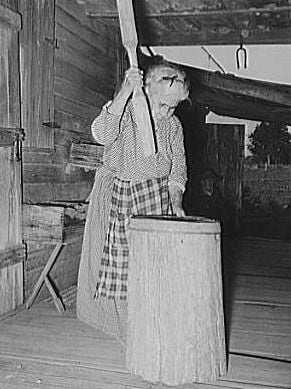
Traditional Cajun food...
* is not fancy.
* is not extremely hot from pepper.
* does not use wine as part of the cooking.
* does not require expensive or exotic ingredients.
* is not available from a box.
* is often simple and brown.
* does not contain cream or pasta as an ingredient.
* is not often seen on restaurant menus.
* does not frequently use blackened meat.
* can be successfully made in areas outside of Cajun Country
Creole Bread Pudding with Whiskey Sauce
INGREDIENTS
1 loaf French bread
2 Tablespoons Vanilla
1 qt. Milk
1 cup golden raisins
3 eggs
4 Tablespoons butter
2 cups of sugar
Whiskey Sauce
1 stick of butter (1/4 Pound)
1 egg
1 cup confectioners sugar
1 jigger of bourbon
Directions:
Preheat oven to 350 degrees. Break French bread into about 8 pieces. In a large bowl, soak bread in milk until well soaked. Mix the bread around before adding the next ingredients. Beat the egg, sugar and vanilla well then add to bread mixture. Next add the raisins and stir mixture well. Grease a baking pan with butter ; pour the mixture into the pan. Place the pan with the pudding in another shallow pan with about an inch of water in it. Bake at 350 degrees for about 40 minutes or until pudding is firm. When cooked take out of oven and allow to cool.
WHISKEY SAUCE
In a double boiler, cook butter and sugar until completely dissolved. Add egg, beating very quickly so that it won't curdle. When the mixture smooths add whiskey. If you desire a stronger whiskey taste, add more. Cut bread pudding into serving pieces and place in deep dish. Add whiskey sauce to the top of the pudding.
Photo below of Creole Bread Pudding with Vanilla Whiskey Sauce, from Pampy's Restaurant in New Orleans, Louisiana (2005). Photo courtesy of Jason Perlow (jason@egullet.org)
Creole Bread Pudding with Whiskey Sauce
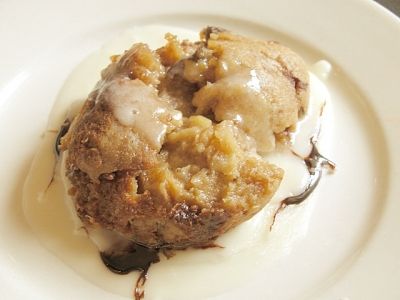
Laissez le bon temps roulez!

Bananas Foster
Bananas Foster is a dessert made from bananas and vanilla ice cream, with the sauce made from butter, brown sugar, cinnamon, dark rum, and banana liqueur. The butter, sugar and bananas are cooked, and then the alcohol is added and ignited. The bananas and sauce are then served over the ice cream. Preparation of the dish is often made into a tableside performance as a flambe.
The dish was created in 1951 by Paul Blang at Brennan's Restaurant in New Orleans, Louisiana. It was named for Richard Foster, a friend of Owen Brennan's and New Orleans Crime Commission chairman.
Here's the recipe:
Makes 4 Servings
INGREDIENTS
5 Tablespoons butter
4 Bananas cut in half lengthwise then halve
4 Tablespoons brown sugar
cup of light rum
1 Teaspoon cinnamon
4 scoops of vanilla ice cream
3 Tablespoons banana liquor
Directions:
Melt butter in a skillet or flamb pan. Add sugar, cinnamon, and banana liquor and stir until sugar melts. Add bananas to sauce and saut until bananas are soft and browned. Add rum and allow to get hot so that you can flamb (ignite) the pan. Liquor should ignite if hot and placed near a flame. Tip pan in circular motion. Place ice cream in 4 bowls topping with 4 pieces of banana. Spoon sauce over bananas and ice cream and serve immediately.
Banana Flamb
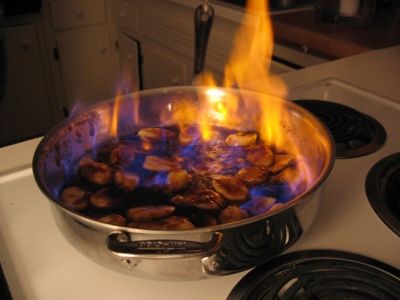
Shrimp Bogged Down in Rice
Here's a good shrimp dish my mother used to serve. It is simple and relatively quick to make, but most of all it is delicious!
INGREDIENTS
1 1/2 c. uncooked rice
1 pod garlic
1/8 tsp, black pepper
3 lbs. fresh shrimp
1 large onion
1/2 tsp lemon-pepper seasoning
1/2 tsp parsley, chopped
1/2/ tsp lemon juice
Cook rice in 3 cups of boiling water and 1 teaspoon of salt. Boil gently without stirring for 15 minutes. Reduce heat to simmer covered 5 to 10 minutes. Set aside. Peel and devein shrimp, wash well, and drain. Put butter in skillet with lemon juice and let melt. Add onion and garlic; sauté until soft. Add shrimp, lemon pepper, seasoning and black pepper. Add parsley. Turn shrimp until cooked. Pour this into cooked rice and toss gently.
Seafood Gumbo
Gumbo is a stew or soup originating in Louisiana, and found across the Gulf Coast of the United States and into the U.S. South. It consists primarily of a strong stock, meat and/or shellfish, a thickener, and the vegetable "holy trinity" of celery, bell peppers, and onion. The soup is traditionally served over rice. The dish is very common in Louisiana among Creoles.
A typical gumbo contains one or more kinds of poultry, shellfish, and smoked pork. Poultry used is typically chicken, duck, or quail. Local shellfish such as the freshwater crawfish and crab and shrimp from the Gulf of Mexico are frequently used. Tasso and andouille provide a smoky flavor to the dish.
Gumbos can be broadly divided between the use of okra as a thickener, and recipes using fil powder in that role. Roux may be added to either, and nowadays it is quite common for roux to be the sole thickening agent itself. Mixing okra and fil is uncommon in Louisiana.
Another division in types of gumbo is between Creole and Cajun styles. Creole gumbos generally use a lighter (but still medium-brown) roux and may include tomatoes, while Cajun gumbos are made with a darker roux and never contain tomatoes.
Some cultural notes of interest include the native Choctaw's fil powder and local seafood were a major addition to the local cuisine. West African slaves' imported okra found its way into the Louisiana kitchens, and provided gumbo with its name. Bell peppers, tomatoes and cooked onions were brought to the table by Spanish colonists.
Seafood Gumbo Recipe
INGREDIENTS
1/2 lb. or more filet of catfish, trout or redfish
2 lbs. headless rasw shrimp, peeled and deveined
1 lb crab claw meat
1 pint of shelled oysters
2 cups chopped onion
1 cup chopped celery
1 lbs fresh or frozen okra
1/2 teaspoon finely chopped parsley
tsp chopped green onions
1 gallon water
4 cloves minced garlic
1 large bay leaf
tsp thyme
8 to 10 allspice berries
1 (1 lb) can tomatoes, undrained
salt, black and red pepper to taste
1 - 1/2 cups cooking oil
1 - 1/2 cups flour
Directions:
To make a roux: Place cooking oil in heavy iron pan over medium heat. When oil is hot, stir flour in a little at a time, blending thoroughly with each addition. Lower heat. It is very important that you keep stirring constantly. After all of the flour has been combined with the oil, turn fire down very low and cook until golden brown, stirring constantly.
Add onion and garlic, cooking slowly until onions are transparent. Add tomatoes and cook low heat until oil rises to the top, which is usually about 30 minutes. Stir frequently.
In a separate skillet, fry okra in oil on medium high heat, stirring constantly unitl okra is no longer stringy. Add the okra to the other mixture. Stir and simmer about 10 minutes. Add water, salt and pepper. Simmer partially covered for 45 minutes. Add other seasonings and simmer an additional 20 minutes. Add shrimp and simmer 15 minutes, then add crab meat simmering 15 minutes more. Add the oysters the last five minutes of cooking. Taste carefully for flavor, adding more seasoning as needed. Remove from stove and stir in green onions and parsley. Serve in a bowl over a generous helping of white rice and French bread.
Shrimp Gumbo
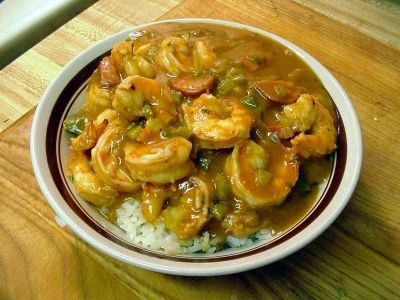
River Road Recipes: The Textbook of Louisiana Cuisine
This book is absolutely essential for anyone who wants some simple, straightforward, and authentic Creole recipes. If you collect cook books, you have to get this one!
Great Cajun and Creole Cookbooks on Amazon
Bay Leaves are a culinary herb often used to flavor soups, stews, and gumbos.
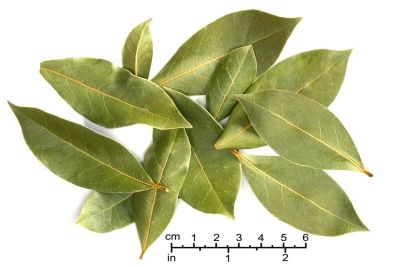
New Orleans Pralines
The great Creole confection
Here is my mother's recipe for the best Creole pralines you would ever have the pleasure of tasting. Now you can make some yourself:
INGREDIENTS
1 cup light brown sugar, packed
1 cup granulated sugar
cup light cream
1 cups pecans, whole or halved
2 tablespoons real butter
Combine sugars and cream in a heavy 2-quart saucepan and bring to boil over medium heat. Stir occasionally with a wooden spoon, until mixture forms a thick syrup. Add butter and when that is blended, add your pecans. Continue to cook over medium heat, stirring frequently.
Remove pan to a heatproof surface and let cool for 10 minutes.
Use a tablespoon to drop rounded balls of the mixture onto sheet wax paper. Be sure to leave about 3 inches between each ball as the mixture will spread out to make a flat confection. Let cool completely.
These are best stored separately in wax paper.
Makes about one dozen pralines.
The Creole Confection - New Orleans Pralines
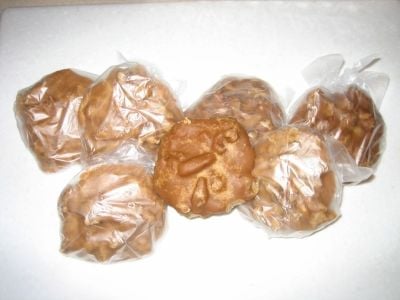
Beignets & Frozen Caf Au Lait at Caf Du Monde in New Orleans, Louisiana. Photo courtesy of Jason Perlow (jason@egullet.org)
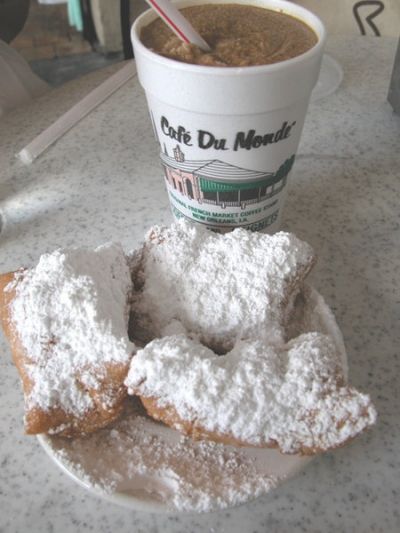
River Road Recipes III: A Healthy Collection
Review: This book was like a dream come true for me. The two previous River Roads Recipes books were my favorite cookbooks, but I was trying to cut back on the fat content that is usually so high in the Cajun & Creole cooking I grew up on. This book offered me the answers I was looking for.
Great Low Fat Cajun Recipes on Amazon
The dried and ground leaves of sassafras form the basis of gumbo fil powder.
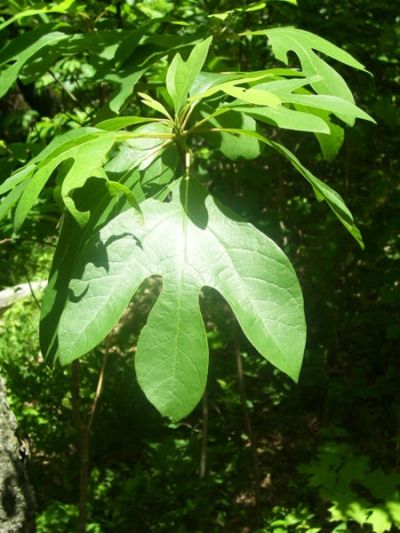
The Holy Trinity of Cuisine
The holy trinity of cuisine are the three ingredients key to a particular cuisine. Because these three ingredients are so common in recipes of a specific cuisine they are almost indivisible and end up being treated as a single ingredient. They also provide the distinctive flavoring of specific cuisines.
The Holy Trinity of Cajun and Creole Cuisine:
Chopped celery
Chopped bell peppers
Chopped onions
Cajun Words and Cooking Terms
Cajuns have a language all their own. If you want to learn more about Cajun cooking, then these terms are essential Cajun vocabulary.
For a complete list of Cajun-related cooking terms, check out this site: http://www.realcajunrecipes.com/dictionary/
- Ah C'est Bon. Definitive descriptor for Cajun cuisine.
- Andouille. Cajun sausage made from pork meat, pork stomach and seasonings. Used for flavoring gumbos, jambalayas, beans and other dishes.
- Beignet. Ah, one of my absolute favorite treats. A deep fried doughnut that almost every Cajun child grew up eating and made popular worldwide at the Caf de Monde restaurant in the New Orleans French Quarter.
- Bisque. A popular thick stew, roux based, usually made with crawfish.
- Boucherie. Gathering of families or group of neighbors for the purpose of party and butchery. A fatted calf or pig is slaughtered and divided among the participants. It is often roasted over an open fire.
- Boudin. Light brown in color, one of the more popular Cajun sausages is made with rice and pork meat.
- Cracklins. These were generally made at the Boucherie by deep fat frying the pork skin that had fat and meat attached. The cracklins were then flavored with a mixture of salt and peppers. Some people call pork rinds cracklins. Cracklins go really well with boudoin.
- File.Ground sassafras leaves used to season gumbo. It was added to the gumbo right at the end of the cooking process; either directly in the pot or in the plate.
- Guinea Hen. This is a noisy black, white, and grey spotted bird often used in gumbo recipes. The guinea has dark and very flavorful meat. This hen was raised by many households many years ago. My grandmother raised guinea hens for years until she died.
- Lagniappe. A little something extra that is free. In the older days, you would get a piece of glassware when you purchased oatmeal.
- Pralines. Tasty, tasty, tasty. What else can I say? My mom made the best pecan pralines on the face of this earth. Pralines are a popular Cajun candy made popular at the French Market in New Orleans.
- Roux. The most classic Cajun creation made by cooking flour and oil together. The popular phrase, "First you make a roux" is used to create dishes such as gumbo, fricassee stews, courtbouillion, and other dishes.
- Smothered. The process of "cooking down" food is where the volume is reduced to a smaller portion.
- Visite'. An afternoon visit spent with family or friends passing around the coffee, the news and the latest stories.
Cajun andouille is made of butt or shank meat & fat, seasoned w/ salt, cracked black pepper, garlic, & smoked over pecan wood &
